You are here
History of Baikonur Cosmodrome.

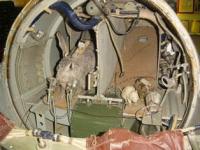
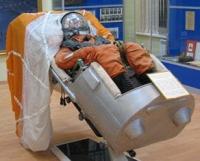
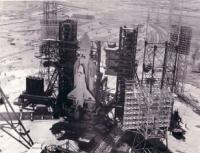
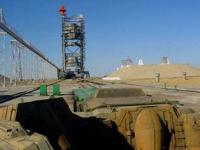
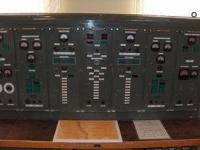
Tourism to Baikonur.
“...Nowhere in the world has there been experience in the design and construction of such complex, essentially unique structures and complexes as the cosmodrome. The requirements for precision and durability of structures were extremely high.
Without everyday ingenuity, creativity, engineering courage, without the ability to take risks, it would be impossible to achieve success. And, I think, it is no coincidence that the leadership of the construction was made up of front-line soldiers - people who had gone through the difficult trials of war, who were hardened in its crucible, people whom no difficulties could either frighten or stop.”
Organizer and participant in the creation of the cosmodrome M.G. Grigorenko.
History of construction of Baikonur Cosmodrome.
Baikonur Cosmodrome (translated from the Kazakh language - Bai - rich, wealth, konyr - brown, and also, as a state - quiet, meek, soft, spacious). The cosmodrome is located in the Kyzyl-Orda region, founded in 1955.
When choosing a location, three options were considered: in the Mari Autonomous Soviet Socialist Republic on the site of forest clearings during the war, in the Makhachkala region on the shores of the Caspian Sea and in the semi-desert adjacent to the Syr Darya River.
The special commission chose the Kazakh option. It took into account the vastness of the geographical area, its remoteness from large settlements and industrial centers, the presence of conditions for laying transport routes and ensuring the safety of rocket launches, proximity to the equator, which makes it possible to make maximum use of the Earth’s rotation speed (from Baikonur, space objects are launched into orbit with an inclination to equatorial plane from 48 to 81 with an eastern launch direction, while they additionally receive about 4% of the orbital speed - 316 m/sec.)
In 1954, design institutes developed and issued assignments for the design of the city of Leninsk and the Baikonur Cosmodrome.
Bikonur Cosmodrome is located:
46 degrees north latitude and 63 degrees 40 minutes east longitude. Republic of Kazakhstan, Kzyl-Orda region, Baikonur. Area (excluding impact fields) 6717 sq. km.
Infrastructure of the Baikonur Cosmodrome:
- 9 types of launch complexes consisting of 15 launchers for launching carrier rockets;
- 4 launchers for testing intercontinental ballistic missiles;
- 11 installation and testing buildings, which house 34 technical complexes for the pre-launch preparation of launch vehicles and spacecraft, as well as 3 refueling and neutralization stations for refueling spacecraft and upper stages with rocket fuel components and compressed gases;
- a measuring complex with a modern information and computing center for monitoring and controlling the flight of launch vehicles, as well as processing telemetric information;
- oxygen-nitrogen plant with a total capacity of up to 300 tons of cryogenic products per day;
- heat and power plant for 60 mgW;
- 72 MW gas turbine power train;
- 600 transformer substations;
- 92 communication centers;
- two 1st class airfields (“Extreme” and “Yubileiny” on the ISS “Buran”);
- 470 km of railway tracks (special tracks - 40 km);
- 1281 km of roads;
- 6610 km of power lines;
- 2784 km of communication lines.
Short historical background of Baikonur Cosmodrome:
In 1954, a State Commission was created to select the site for the construction of the cosmodrome. The head of the Kapustin Yar test site, Lieutenant General of Artillery V.I., was appointed chairman of the commission Voznyuk.
fter reconnaissance of several regions of the country, the commission came up with a proposal to locate a cosmodrome in a desert region of Kazakhstan east of the Aral Sea, several hundred kilometers from the village of Baikonyr (Ulytau region).
This place had a number of advantages over others: sparse population not only in the area of the cosmodrome, but also along the route of launched rockets, flat semi-desert terrain, the presence of the largest Central Asian river, the Syr Darya, a railway and a highway passing nearby, more than three hundred sunny days a year and, most importantly, proximity to the equator, which makes it possible to use the additional speed of the Earth’s rotation for launches.
On February 12, 1955, the government decided to build the Baikonur cosmodrome. The famous builder, Major General G.M., was appointed construction manager. Shubnikov. It is noteworthy that it was he who supervised the construction of the monument to the soldier-liberator according to the project of E.V. Vuchetich in Treptower Park in Berlin. In January 1955, the first detachment of military builders arrived under the command of Senior Lieutenant I.N. Denezhkina.
The creation of a production base began: concrete plants, mortar units, mechanized warehouses for sand and gravel were laid, sawmills and woodworking production were organized. Simultaneously with the start of construction, the process of forming the very team of creators of the space harbor was underway.
The difficulties that the builders of the cosmodrome encountered were associated not only with harsh climatic conditions, but also with the unsettled conditions of life and, most importantly, with extremely short construction times and the lack of any experience in creating such objects.
The cars could not stand it, but the people survived. One of the organizers and participants in the creation of the cosmodrome M.G. Grigorenko recalled: “...Nowhere in the world has there been experience in the design and construction of such complex, essentially unique structures and complexes as the cosmodrome.
The requirements for precision and durability of structures were extremely high. Without everyday ingenuity, creativity, engineering courage, without the ability to take risks, it would be impossible to achieve success. And, I think, it is no coincidence that the leadership of the construction was made up of front-line soldiers - people who had gone through the difficult trials of war, who were hardened in its crucible, people whom no difficulties could either frighten or stop.”
Despite the difficult conditions, in the first months a road and railway were laid and construction began on the main facility - the future first launch complex. To create it, it was necessary to lift about a million cubic meters of soil and lay over thirty thousand cubic meters of concrete.
Four months later, the launch facility was handed over for installation of launch equipment. The first installation and testing building was completed on time. On May 5, 1955, construction began on a residential village for cosmodrome testers, which at different times bore different names: “Tashkent-90”, the “Zarya” village, the “Zvezdograd” village, the city of Leninsk and, since December 1995, the city of Baikonur.
On June 2, 1955, a directive of the General Staff approved the organizational and staffing structure of the 5th Research Test Site (NIIP). This date was officially recognized as the birthday of the Baikonur Cosmodrome.
By the end of 1955, the training ground included 26 units and separate units. The first to be formed were an automobile battalion, an aviation unit, a security company and a military hospital. A division of the Reserve brigade of the Supreme High Command arrived from Belokorovichi to the training ground. Lieutenant General of Artillery A.I. Nesterenko was appointed head of the 5th NIIP.
The total number of people working at the training ground at the end of 1955 was 1,900 military personnel and 664 workers and employees. In December 1956, the construction of the priority facilities of the first space harbor was completed.
Finishing of ground equipment and preparation for testing missile systems has begun. By the beginning of the tests, there were 427 engineers and 237 technicians at the test site, of which 48% were under 25 years old and about 50% were participants in the Great Patriotic War.
The total number of military personnel increased to 3,600 people. Most of the testers underwent training and internship at factories producing rocket technology, at research institutes and design bureaus, at the Kapustin Yar training ground.
n May 15, 1957, the first launch of the R-7 intercontinental ballistic missile designed by S.P. Korolev was made from the launch site of the test site. The rocket consisted of a central block, four side blocks and a head section, had a length of 32 meters, a maximum diameter of the central block of 2.95 meters, side blocks 19.8 meters long with a maximum diameter of 2.95 meters.
The maximum width along the air rudders of the package is 10.3 meters. Launch weight up to 273 tons, thrust on Earth 3940 kN, flight range 8600 kilometers. During the first launch, the rocket flew 400 kilometers.
The launch was unsuccessful due to a fire in the tail section. The first and also unsuccessful launch of the Atlas ICBM in the United States took place in June 1957. R-7, launched from the 5th NIIP on August 21, 1957, successfully completed the active part of the trajectory and delivered the warhead to a given area.
Tests have shown that the R-7 rocket can launch an artificial Earth satellite into orbit. 4 October 1957 at 22 hours 28 minutes 34 seconds Moscow time (October 5 at 00 hours 28 minutes 34 seconds Baikonur time) from launch pad No. 1 of the 5th NIIP by R-7 rocket launched into low-Earth orbit the world's first artificial Earth satellite (AES).
The weight of the satellite was 83.6 kilograms. Thus the countdown to the space age began. The first satellite existed in space for 92 days, made 1,400 revolutions around the Earth and covered a path of about 60,000,000 km.
On November 3, 1957, the second satellite was launched into space from the cosmodrome, in the pressurized cabin of which was the dog Laika; the weight of the satellite was 508.3 kg. At the end of 1957, the 5th NIIP included 1 installation and testing complex, 1 launch, 15 measuring points (9 on the territory of Kazakhstan and 6 on the territory of the Russian Federation), fall bases of the first stage and the head part.
In December 1957, a group of military personnel of the 5th NIIP received state awards for exemplary performance of military duty during testing of rocket and space technology. In the USA, the Atlas ICBM flew 600 kilometers in December 1957, and the first American satellite, Ex-Plorer 1, was launched on February 1, 1958 and weighed 8.3 kilograms.
It fit in the palm of your hand, and the American press called it an “orange.” In 1958, testing of the R-7 launch vehicle and its warhead continued for testing purposes. The measuring complex of the cosmodrome is equipped with new radio telemetry stations.
On May 15, the R-7 launch vehicle was launched, which launched the third satellite weighing 1327 kilograms into orbit.
On July 2, 1958, Colonel K.V. was appointed head of the training ground. Gerchik, who previously headed the headquarters of the cosmodrome. On August 17, an unsuccessful attempt by the United States to launch the Pioneer probe to the Moon began a grueling race to the Moon for the United States and our state.
Unsuccessful attempts to approach the Moon were also made by the United States on October 11, November 8 and December 6, 1958. On September 23, at the 5th NIIP, an attempt to launch a spacecraft to the Moon using the three-stage Vostok rocket, created on the basis of the R-7, ended unsuccessfully.
Unsuccessful launches also took place on October 12 and December 3, 1958. In 1958, 10 launches were made from the launch pad of the 5th NIIP (7 by the R-7 launch vehicle and 3 by the Vostok launch vehicle).
The new year 1959 brought another victory in space exploration. On January 2, at 19 hours 41 minutes 21 seconds Moscow time, the world's first spacecraft launched towards the Moon.
For the first time, the second cosmic speed was achieved and the first artificial satellite of the Moon was created. The Luna-1 spacecraft was launched by the Vostok launch vehicle designed by S.P. Korolev, its mass was 1472 kilograms, the spacecraft passed 5000 kilometers from the Moon.
The telemetry stations of the test site's measuring complex received signals from the lunar explorer along the entire route to the Moon. On March 3, 1959, the first automatic interplanetary apparatus in the United States, Pioneer 1, weighing 6.1 kilograms, was launched.
It passed 60,000 kilometers from the Moon instead of the planned 24,000 kilometers. In the fall of 1959, the task of delivering a spacecraft to the Moon was solved for the first time. It was carried out by the Luna-2 station, launched on September 12.
The Luna-2 station accurately entered the intended orbit and on September 14 at 00 hours 02 minutes 02 seconds Moscow time reached the surface of the Moon in the region of the Sea of Clarity, approximately 800 km from the center of the lunar disk.
Ball and ribbon pennants depicting the Coat of Arms of the Soviet Union with the inscription “USSR. September 1959." Duplicates of the pennants are now kept in the Cosmodrome Museum.
20 days later, on October 4, in order to photograph the far side of the Moon from the 5th NI-IP, the next automatic station “Luna-3” was launched. The station photographed almost half of the surface of the lunar globe, two-thirds of the photographs made up an image of the far side of the Moon.
Based on photographs transmitted by the Luna-3 station, the first atlases and a map of the far side of the Moon were compiled in 1960. During 1959, 16 launches were carried out at the test site, 14 of which were successful;
The polygon measuring complex continues to develop; The second stage of testing the R-7 missile at range with the required accuracy has been completed. At the end of 1959, 8,000 people already lived in the village of Zarya. In January 1960, flight tests of the R-7 missile were completed at the test site and it entered service with the Strategic Missile Forces.
On May 15, the launch of a satellite ship by the Vostok launch vehicle began preparations for a human flight into space. The Vostok launch vehicle had a length of 38.76 meters, a launch weight of 287 tons, and an initial weight of the 3rd stage of 12.5 tons.
The mass of the payload launched into low-Earth orbit is 4.725 tons. July 29, 1960 labor test site was highly appreciated. For successful testing of the R-7 rocket and in connection with the 5th anniversary, the test site was awarded the Order of the Red Star.
The second satellite ship, launched on August 19, 1960, had on board the first living “testers” dogs Belka and Strelka. After 17 revolutions around the Earth, the ship landed in a given area. The “testers” survived the flight and landing normally.
This was an important stage in the development of world astronautics. On October 24, 1960, a disaster occurred during the testing of the new R-16 intercontinental ballistic missile designed by M.K. Yangelya. During electrical tests on a fueled rocket, an unauthorized start of the 2nd stage engines occurred.
As a result of the fire and poisoning by vapors of fuel components, 76 military personnel and industry representatives died. Among the dead were 35 officers, 8 sergeants and 14 soldiers. Among the dead was the Commander-in-Chief of the Strategic Missile Forces, Chief Marshal of Artillery M.I. Nedelin, test managers from the test site, Colonels A.I. Nosov and E.I. Ostashev.
Today the streets of the city of Baikonur bear their names. Every year, October 24 is celebrated as the Day of Remembrance of the fallen testers of the Baikonur cosmodrome. On December 24, the third satellite ship launched with the dogs Bee and Mushka.
Due to the shutdown of the 3rd stage engine, the descent module separated and landed by parachute in Siberia near the Lower Tunguska River. The animals remained alive. At the end of 1960, 5 installation and testing buildings and 4 launch sites were built and put into operation at the test site.
Preparations are underway for testing new types of rocket and space technology. An air defense system has been created. In 1960, military units of the training ground began to be involved in combat duty. There are more than 10,000 people at the site.
On February 1, 1961, a Decree was signed on presenting the 5th NIIP with the Battle Banner. On March 9 and 25, the last flight tests of the Vostok spacecraft were carried out with anthropological dummies and animals on board.
On April 12, 1961, at 9:07 a.m., the combat crew of the 5th NIIP prepared and launched into Earth orbit the Vostok spacecraft, piloted by our compatriot Yu.A. Gagarin. The mass of the spacecraft was 4.73 tons, length - 4.4 meters, maximum diameter - 2.43 meters.
"Vostok" made one revolution around the Earth in 1 hour 48 minutes and landed in the Engel district of the Saratov region. For the first time in the launch documents on April 12, 1961, the 5th NIIP was named the Baikonur Cosmodrome. In the United States, the first manned ballistic flight lasting 15 minutes took place on May 5, 1961.
On May 5, the head of the training ground instead of Major General K.V., who had left for the post of head of the Central Command Center of the Strategic Missile Forces. Gerchik was appointed Colonel A.G. Zakharov, former chief of staff of the test site.
On August 6, 1961, the Vostok spacecraft was launched with cosmonaut G.S. Titov on board (17 orbits, 25 hours of flight). In the USA, the first orbital manned flight took place on February 28, 1962 (3 orbits, 5 hours). So, man escaped into space.
Now that flights beyond the Earth’s atmosphere have become regular, and their scientific and economic effect is really noticeable, we can assess with great attention the significance of our space achievements in the period before the advent of qualitatively new technology.
The launch of Vostok and the launches of the next ships in this series are not just a chronology of events. These are new ideas, new plans and achievements. A new era in the history of the Earth. Years will pass, but the dates of the first space flights and the images of the pioneers of space achievements, testers of the Baikonur cosmodrome, developers and creators of space technology, and cosmonauts will remain in the grateful memory of mankind.
The Baikonur Cosmodrome has become a symbol of the space age. The growing scale and depth of space exploration and exploration, the expanding prospects for using its capabilities in the interests of science and direct economic activity of people required the construction of new cosmodromes.
On December 20, 1961, by decision of the government, the Plesetsk cosmodrome was created. In 1965, Colonel A.A. was appointed head of the Baikonur cosmodrome. Kurushin (transferred in 1973 with the rank of lieutenant general to the city of Bolshevo, Moscow region).
Subsequently, the heads of the cosmodrome were Lieutenant General V.I. Fadeev, Yu.N. Sergunin, Yu.A. Zhukov, A.L. Kryzhko. In September 1992, by decrees of the presidents of Russia and Kazakhstan, Lieutenant General A.A. was appointed head of the cosmodrome. Shumilin, who began his military career as a lieutenant at the Baikonur cosmodrome in 1959.
In the years that have passed since the flight into space, Yu.A. Gagarin, new generations of liquid-fueled intercontinental ballistic missiles, both light and heavy classes, which became the basis of the country's strategic military power.
During the same time, new launch vehicles of light, medium and heavy classes and their modifications were tested: Cyclone, Soyuz, Proton, N-1, Zenit, Energia. Of these, only N-1 did not complete the tests, not so much for technical reasons, but for purely subjective reasons - the struggle of designers for the leading place after the death of S.P. Korolev.
Satellites of the Cosmos and Meteor series, communications and television satellites Ekran, Raduga, Horizon, Molniya, a navigation satellite Glonass, orbital satellites were launched from the Baikonur cosmodrome. stations “Salyut”, “Mir”, modules “Kvant”, automatic interplanetary stations “Mars”, “Venera”, “Zond”, “Vega”.
Launching any satellite from the Baikonur cosmodrome is cheaper than from other cosmodromes in the country. The launch area of the cosmodrome stretches 85 km from north to south and 125 km from west to east.
In addition to the launch area, the cosmodrome includes measuring points located at a distance of up to 500 kilometers along the rocket flight path on the territory of the Republic of Kazakhstan, as well as 22 fall fields of spent rocket stages with a total area of 4.8 million hectares of land taken out of circulation.
In various years, the number of main technical structures reached its maximum: 52 launch facilities, 34 technical complexes, 3 computer centers, 16 stationary measuring points, 2 mobile automobile, 1 railway, 4 aircraft measuring points, 4 fall bases, oxygen-nitrogen plant, 2 mechanical assembly plants, 2 airfields and 5 landing sites, a thermal power plant with a capacity of 80 MW, 2 power trains, a weather station, an ionospheric station.
Over the past 40 years, more than 1,100 spacecraft for various purposes and more than 100 intercontinental ballistic missiles have been launched at Baikonur, 38 main types of missiles, more than 80 types of spacecraft and their modifications have been tested.
But the main value of the cosmodrome is people. The high scientific and intellectual potential of which is evidenced by the following facts: several hundred research works have been completed, thousands of innovation proposals have been introduced, several dozen inventions have been introduced, dozens of testers have defended their dissertations for an academic degree.
The first candidates of technical sciences in 1959 were: Colonels A.A. Vasiliev, F.A. Gorin, M.F. Zhuravlev, N.G. Merzlyakov, A.I. Nosov, lieutenant colonels V.I. Bely, V.A. Bokov, S.A. Kalinin, A.F. Korshunov, E.I. Ostashev and S.D. Titov.
Selfless dedication to work, high professional skill, and the desire to achieve the final result were and remain the main qualities of the cosmodrome testers. And the state evaluates their work according to its merits.
On the Battle Banner of the cosmodrome the Order of Lenin, the October Revolution and the Red Star. Military unit 25741 was awarded the Order of the Red Star, whose combat crew launched the first artificial Earth satellite, the Vostok spacecraft, with the first cosmonaut of the planet Earth, Yu.A. Gagarin and most manned spacecraft.
Nine Baikonur workers (testers and military builders) were awarded the title of Hero of Socialist Labor. The first to receive this title in 1957 was Colonel A.I. Nosov. Subsequently, generals V.A. became Heroes of Socialist Labor. Bochkov, A.S. Kirillov, A.A. Makarychev, A.S. Matrenin, A.A. Fedorov, A.A. Shumilin, majors V.P. Berezin, O.V. Nikolaev. Hundreds of military personnel and civilian personnel of the cosmodrome were awarded state awards.
Over 100 people have become honorary citizens of Baikonur over its 45-year history. Among them are the creators of rocket and space technology, domestic and foreign cosmonauts and cosmodrome workers: N.M. Artemenko, A.I. Dryakin, V.A. Zavalishina, A.I. Nesterenko, A.A. Tkalenko, G.M. Shubnikov.
62 Baikonur workers were awarded honorary titles in the field of science, technology and culture, more than 30 people became laureates of the Lenin and State Prizes. The work started by the first testers of the Baikonur cosmodrome is continued by their children and grandchildren - numerous military dynasties are clear evidence of this.
At various times, over 200 young lieutenants, children and grandchildren of the cosmodrome military personnel, returned to serve at Baikonur. The army contingent of the cosmodrome is not only men. In the ranks of the Russian Armed Forces at the Baikonur cosmodrome, 40 female officers, 396 female warrant officers, and over 1,500 female soldiers and sergeants of contract service serve (as of 1997).
Today, Baikonur is open to global cooperation in the field of space exploration, for the implementation of the launch of new generation international orbital complexes and manned astronautics into orbit as the only, largest cosmodrome in Eurasia.
Authority and photos by:
http://ruscosmos.narod.ru/KA/glavnaia/Rak_nos/zenit.htm






